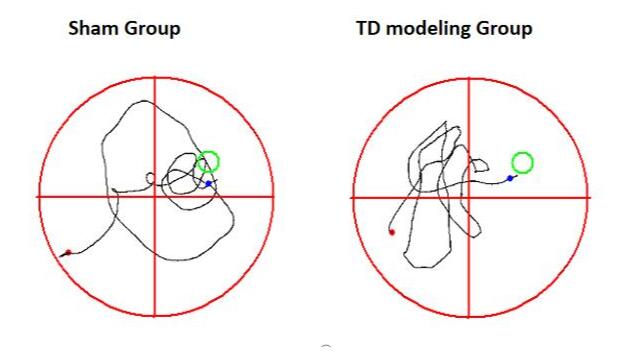Rat Model for Tourette Syndrome (TS) 

Tourette's
- UOM
- FOB US$ 200.00
- Quantity
Overview
Properties
- Product No.DSI550Ra01
- Organism SpeciesRattus norvegicus (Rat) Same name, Different species.
- ApplicationsUsed to screen drugs for preventing and treatment for Tourette Syndrome
Research use only - Downloadn/a
- Category
- Prototype SpeciesHuman
- SourceInduced by 3,3 '-iminodipropionitrile(IDPN)
- Model Animal StrainsSD Rats(SPF), healthy, male, bodyweight:180g~200g
- Modeling GroupingRandomly divided into six group: Control group, Model group, Positive drug group (Tiapride Hydrochloride )and Test drug group (three doses) n=15.
- Modeling Period7d
Sign into your account
Share a new citation as an author
Upload your experimental result
Review

Contact us
Please fill in the blank.
Modeling Method
1. The rats were injected intraperitoneally with 3,3 '-iminodipropionitrile(IDPN), and the dose: 300 mg/(kg.d) for continuous administration for 7 days.
2. After modeling, the rats were given intragastric administration at the same time every morning. The blank group and model group were given normal saline. The intragastric dose was 1mL/100g.
Model evaluation
Behavioral experiment evaluation criteria
1. Motion behavior assessment standard:
0 points: quiet or normal activity;
1 points: over excited;
2 points: increase the behavior of inquiry, non continuous nasal suction;
3 points: keep running;
4 points: stop running with startle.
2. Stereotyped behavior assessment standard: according to the Diamond score
0 points: no stereotyped movement;
1 points: the body rotation behavior (rotation clockwise or counterclockwise);
2 points: head and neck movement up and down too much (an abnormal movement of head and neck and vertical direction);
3 points: head and neck movement up and down too much and rotating motion;
4 points: head to the side of the pendulum, with head and neck movement up and down too much.
Behavioral assessment time: the behavioral experiment was performed every other day for 7 days after modeling, and a total of 5 behavioral tests were performed.
Pathological results
Cytokines level
Dopamine(DA), Dopamine receptor 2(D2R):
After the last administration of fasting but free drinking water at night, 5 rats in each group were randomly selected, after the end of the blood into the EDTA anticoagulant tube, frozen centrifugation (3000 rpm, 10 minutes), take the supernatant stored at -80℃.
ELISA kit was used to detect the content of DA and D2R in serum and striatum
Statistical analysis
SPSS software is used for statistical analysis, measurement data to mean ± standard deviation (x ±s), using t test and single factor analysis of variance for group comparison , P<0.05 indicates there was a significant difference, P<0.01 indicates there are very significant differences.
Giveaways
Increment services
-
 Tissue/Sections Customized Service
Tissue/Sections Customized Service
-
 Serums Customized Service
Serums Customized Service
-
 Immunohistochemistry (IHC) Experiment Service
Immunohistochemistry (IHC) Experiment Service
-
 Small Animal Micro CT Imaging Experiment Service
Small Animal Micro CT Imaging Experiment Service
-
 Small Animal MRI Imaging Experiment Service
Small Animal MRI Imaging Experiment Service
-
 Small Animal Ultrasound Imaging Experiment Service
Small Animal Ultrasound Imaging Experiment Service
-
 Transmission Electron Microscopy (TEM) Experiment Service
Transmission Electron Microscopy (TEM) Experiment Service
-
 Scanning Electron Microscope (SEM) Experiment Service
Scanning Electron Microscope (SEM) Experiment Service
-
 Learning and Memory Behavioral Experiment Service
Learning and Memory Behavioral Experiment Service
-
 Anxiety and Depression Behavioral Experiment Service
Anxiety and Depression Behavioral Experiment Service
-
 Drug Addiction Behavioral Experiment Service
Drug Addiction Behavioral Experiment Service
-
 Pain Behavioral Experiment Service
Pain Behavioral Experiment Service
-
 Neuropsychiatric Disorder Behavioral Experiment Service
Neuropsychiatric Disorder Behavioral Experiment Service
-
 Fatigue Behavioral Experiment Service
Fatigue Behavioral Experiment Service
-
 Nitric Oxide Assay Kit (A012)
Nitric Oxide Assay Kit (A012)
-
 Nitric Oxide Assay Kit (A013-2)
Nitric Oxide Assay Kit (A013-2)
-
 Total Anti-Oxidative Capability Assay Kit(A015-2)
Total Anti-Oxidative Capability Assay Kit(A015-2)
-
 Total Anti-Oxidative Capability Assay Kit (A015-1)
Total Anti-Oxidative Capability Assay Kit (A015-1)
-
 Superoxide Dismutase Assay Kit
Superoxide Dismutase Assay Kit
-
 Fructose Assay Kit (A085)
Fructose Assay Kit (A085)
-
 Citric Acid Assay Kit (A128 )
Citric Acid Assay Kit (A128 )
-
 Catalase Assay Kit
Catalase Assay Kit
-
 Malondialdehyde Assay Kit
Malondialdehyde Assay Kit
-
 Glutathione S-Transferase Assay Kit
Glutathione S-Transferase Assay Kit
-
 Microscale Reduced Glutathione assay kit
Microscale Reduced Glutathione assay kit
-
 Glutathione Reductase Activity Coefficient Assay Kit
Glutathione Reductase Activity Coefficient Assay Kit
-
 Angiotensin Converting Enzyme Kit
Angiotensin Converting Enzyme Kit
-
 Glutathione Peroxidase (GSH-PX) Assay Kit
Glutathione Peroxidase (GSH-PX) Assay Kit
-
 Cloud-Clone Multiplex assay kits
Cloud-Clone Multiplex assay kits








